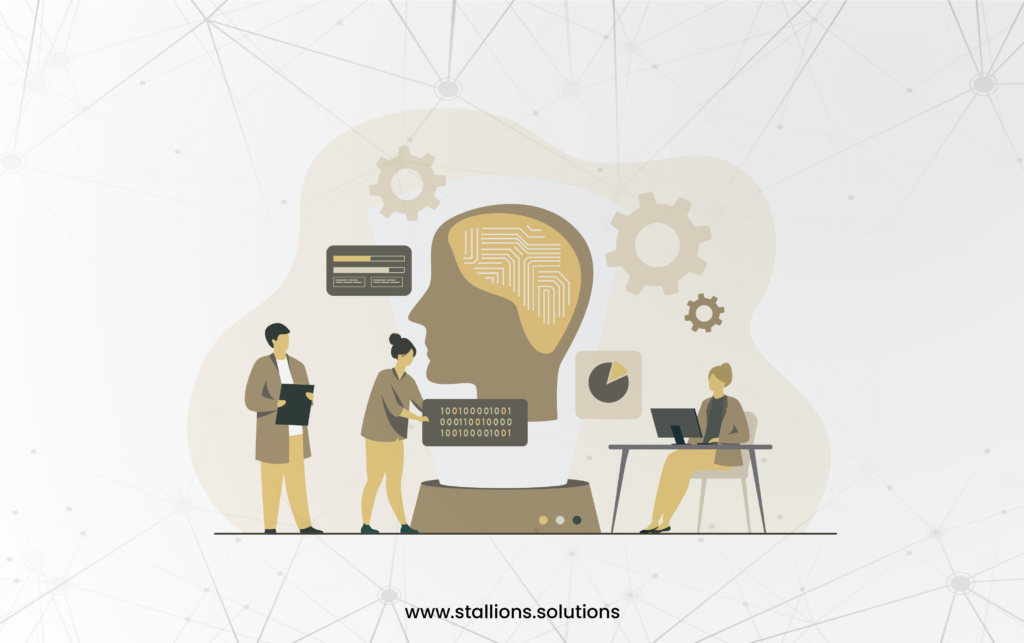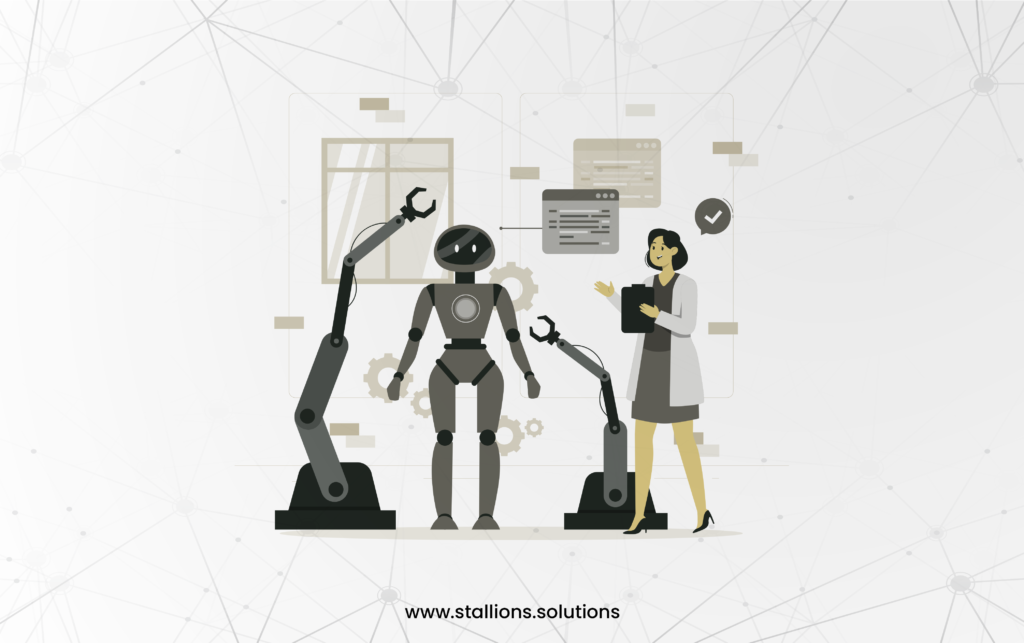Machine learning (ML) is a powerful technology that’s changing many industries. It’s helping to improve processes and make better decisions. We see its impact in areas like healthcare, finance, marketing, and even self-driving cars. These advancements were once just dreams, but now they’re becoming reality. However, there are some challenges in implementing Machine Learning that organizations face when trying to use ML effectively. Let’s look at some of these hurdles and how to overcome them.
Machine Learning

Machine learning is a subset of artificial intelligence (AI) that allows computer systems to learn from data and improve their performance on tasks without being explicitly programmed. Machine learning (ML) uses a range of algorithms and techniques to help computers recognise patterns, make predictions, and optimise decisions based on real-world data. Unlike traditional programming, where you have to give explicit instructions, ML algorithms learn by finding patterns and relationships within the data. They keep improving their models through experience. This ability to learn and adapt is what makes ML so powerful. It allows organisations to gain valuable insights, automate complex tasks, and make informed decisions across many different fields and industries.
Overcoming Key Hurdles in Machine Learning Implementation
Data Quality and Quantity

The success of machine learning (ML) algorithms largely depends on the quality of the data they are given. It’s not just any data; it needs to be clean, relevant, and sufficient. If the data is incomplete, noisy, or biased, it can seriously affect the performance and reliability of ML models. To tackle this, organisations should focus on strong data preprocessing techniques and, in some cases, data augmentation strategies. Moreover, it’s essential to invest in data collection and storage infrastructures that can manage the volume and variety of data needed for ML tasks.
Lack of Domain Expertise
Machine learning (ML) algorithms are incredibly powerful, but they can’t work in isolation. They need to be paired with domain expertise to properly frame problems, understand data, and interpret results. However, combining domain expertise with ML knowledge can be quite challenging. This highlights the importance of collaboration between data scientists, domain experts, and stakeholders. Such teamwork is essential for creating ML solutions that meet business needs and provide real value.
Model Selection and Tuning

The process of selecting and tuning ML models is complex. With a wide array of ML algorithms and techniques, choosing the suitable model for a task can be overwhelming. Furthermore, even the most advanced algorithms require tuning to optimize performance for specific datasets and objectives. Hyperparameter tuning, feature selection, and model evaluation are iterative processes that demand careful experimentation and validation. While automated machine learning (AutoML) platforms are emerging to streamline these tasks, they still require human oversight.
Interpretability and Explainability
As ML models are increasingly deployed in high-stakes applications such as healthcare and finance, the demand for model interpretability and explainability is growing. Black-box models often achieve high accuracy and offer limited insights into the reasoning behind their predictions. This lack of transparency can hinder trust and acceptance, especially in regulated industries. Techniques such as feature importance analysis, model-agnostic explanations, and interpretable model architectures aim to address these concerns, but achieving a balance between performance and interpretability remains a challenge.
Ethical and Bias Considerations
ML algorithms are susceptible to perpetuating and even amplifying biases in the data they are trained on. Biases can arise from historical disparities, societal prejudices, or algorithmic design choices. Recognizing and mitigating bias in ML systems is essential to ensure fairness, equity, and accountability. This requires a holistic approach that involves diverse stakeholders, rigorous bias detection mechanisms, and proactive measures to promote diversity and inclusion in dataset collection and model development.
Scalability and Deployment

Building an ML model is the first step; deploying it into scale production is a different challenge. ML systems must be scalable, reliable, and maintainable to meet the demands of real-world applications. Infrastructure considerations like cloud computing resources and containerization technologies ensure seamless deployment and integration with existing systems. Additionally, monitoring and updating deployed models to adapt to evolving data distributions and business requirements is an ongoing task that requires careful management.
Regulatory and Legal Compliance
As ML technologies advance, regulatory frameworks struggle to keep pace. Ensuring compliance with data protection regulations, such as GDPR and CCPA, as well as industry-specific standards and guidelines, is paramount. Organizations must navigate a complex legal and ethical considerations landscape, balancing innovation with responsibility. Investing in robust data governance practices, privacy-preserving techniques, and transparent communication with regulators and stakeholders can help mitigate compliance risks.
Conclusion
In conclusion, while the potential of machine learning is vast, realizing its benefits requires overcoming many challenges. From data quality and domain expertise to model selection and interpretability, organizations must navigate a complex terrain to implement ML solutions successfully. By fostering collaboration between data scientists, domain experts, and stakeholders, investing in robust data infrastructure and governance practices, and prioritizing ethical considerations, organizations can overcome these challenges and harness the full potential of machine learning to drive innovation and create value. As ML continues to evolve, it is essential to approach implementation with a mindset of continuous learning, adaptation, and responsible stewardship of this transformative technology.



